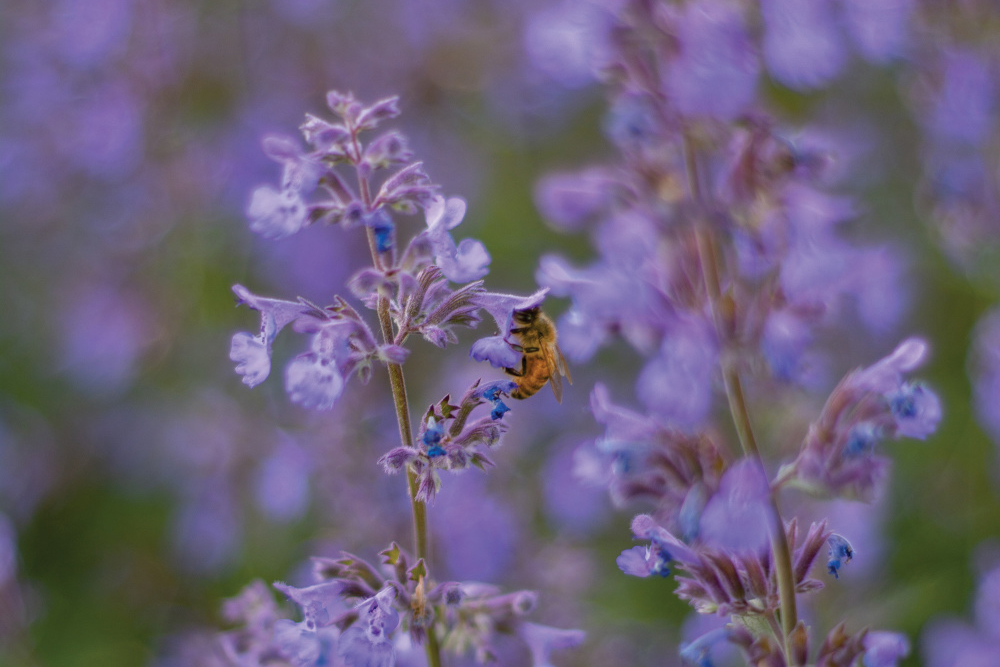Home > North Dakota > Dakota Zoo Bee Exhibit Showcases the Importance of Pollinators
Dakota Zoo Bee Exhibit Showcases the Importance of Pollinators
In partnership with: North Dakota Department of Agriculture

Bees, one of the most important pollinators, are vital to our ecosystem. The world’s food production depends upon the intricate work of bees.
Yet most people aren’t buzzing about the agricultural impact these insects make. However, thanks to a grant through the North Dakota Department of Agriculture, guests are swarming to an inside look at a bee colony recently added at the Dakota Zoo.
See more: Meat Processing Offers Students in North Dakota New Skills and Opportunities

Working Wings
The Dakota Zoo in Bismarck is home to 125 species of birds, insects, mammals and reptiles. Samantha Brunner, NDDA state apiary inspector and key collaborator on the bee exhibit, explains people may not flock to the zoo just to see the bees per se, but the interactive expansion pleasantly stings with engagement.
“A lot of people are frightened of bees, and, with this exhibit, they can view the bees and still feel completely safe,” says Brunner, who has been a state apiary inspector for more than 10 years. “There are fun bee facts surrounding the colony, magnifying glasses to take a closer look and more visible frames to see lots of bee activity.”
Little learners especially gravitate toward the playground equipment for hands-on enrichment. The zoo worked with Dakota Playground to build the custom interactive equipment right under the hive, so kids can safely view the hive while they enjoy the playground, which includes pollinator theming throughout as well as interactive learning elements coordinating with the exhibit. The exhibit space is much larger than the zoo’s former bee display.
“We went from one small hive to two larger observation units that are connected,” says Allison Malkowski, Dakota Zoo assistant director. “Plus, we have the ability to add on three other observation slots as the hive grows via ports that connect them.”

Malkowski says the unique habitat design grants visitors up-close access to see bees cleaning debris out of the hive, enter the hive with pollen sticking to their legs and waggle dancing, a figure-eight style dance bees do to communicate about the direction and distance to pollen sources.
The exhibit supports one queen bee and hundreds of other busy bees, with a great probability of expansion. Unlike other colonies that are seasonally relocated to California, Florida, Texas or other warm-climate regions, the Dakota Zoo doesn’t disrupt the hive.
“We’re able to keep our hive at the zoo year-round. So, we winter them right here – with supplemental feeding like sugar water – and then open back up when seasonal resources replenish,” Malkowski says of the mostly self-sufficient bees.
See more: North Dakota Beef to School Program Serves Up Inspiration
A Sweet Commodity
North Dakota is the top honey-producing state in the country, with North Dakota bees producing 31.2 million pounds of honey in 2022. This sweet commodity may be purchased at the Dakota Zoo’s gift shop and other retailers throughout the state.
“North Dakota producers plant a variety of flowering crops, including alfalfa and canola as well as sweet clover, that bloom in the summer,” Brunner says. “All of these help with the high production numbers, but the largest factor for honey-producing success is the number of honey bees in our state each summer. In 2023, there were 356 beekeepers, 843,411 colonies and 20,943 registered locations.”
See more: North Dakota 4-H Clubs Serve Through Volunteering and Community Work
Pollinator Pride

NDDA and the Dakota Zoo will continue to collaboratively monitor the well-being of the bees and work to promote conservation efforts to halt the decline among pollinator species.
“It’s invaluable for people to learn about pollinators of all kinds – especially bees because of how important the symbiotic relationship between bees and our cropland in North Dakota is,” Malkowski explains.
Beyond its rose garden, the Dakota Zoo has peppered in more pollinator plants, like allium bulbs, sage and sedum. Both in the ground and potted, these native pollinators flourish near the Discovery Center, as well as near the aoudad and prairie dog exhibits. These garden spaces help visitors witness honey bees foraging in the summer throughout the entire zoo property.
And while efforts spearheaded by beekeepers and zoologists are crucial, at home, gardeners can likewise grow native wildflowers and reduce the use of harsh pesticides to help honey bees.
See more: North Dakota State University Research Uses Bees to Prevent Disease in Sunflowers




Shouldn’t the article mention one queen bee and “THOUSANDS” of worker bees (plus drones)
rather than one queen and hundreds of busy bees ?
I was a little disappointed in the article after seeing the link on Facebook.